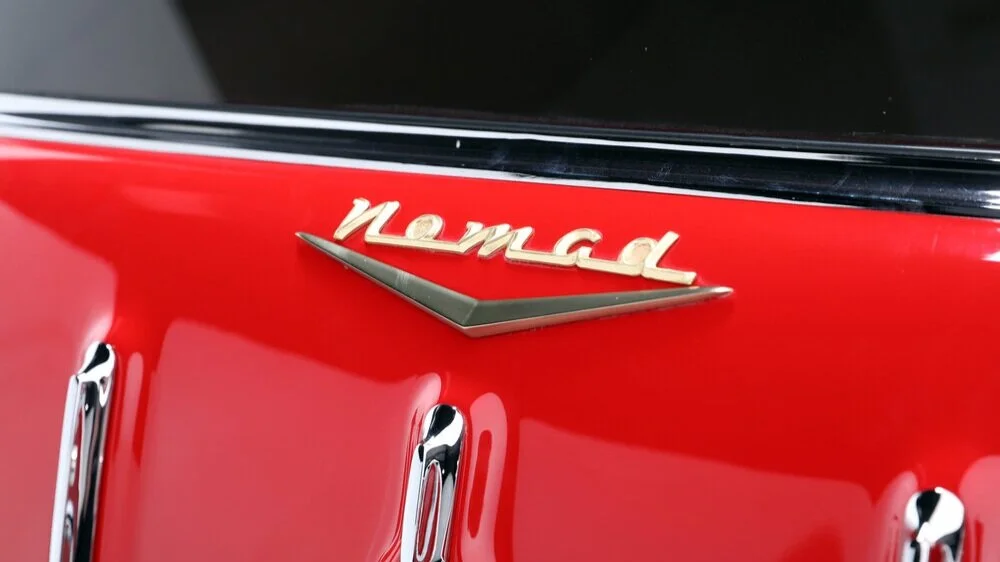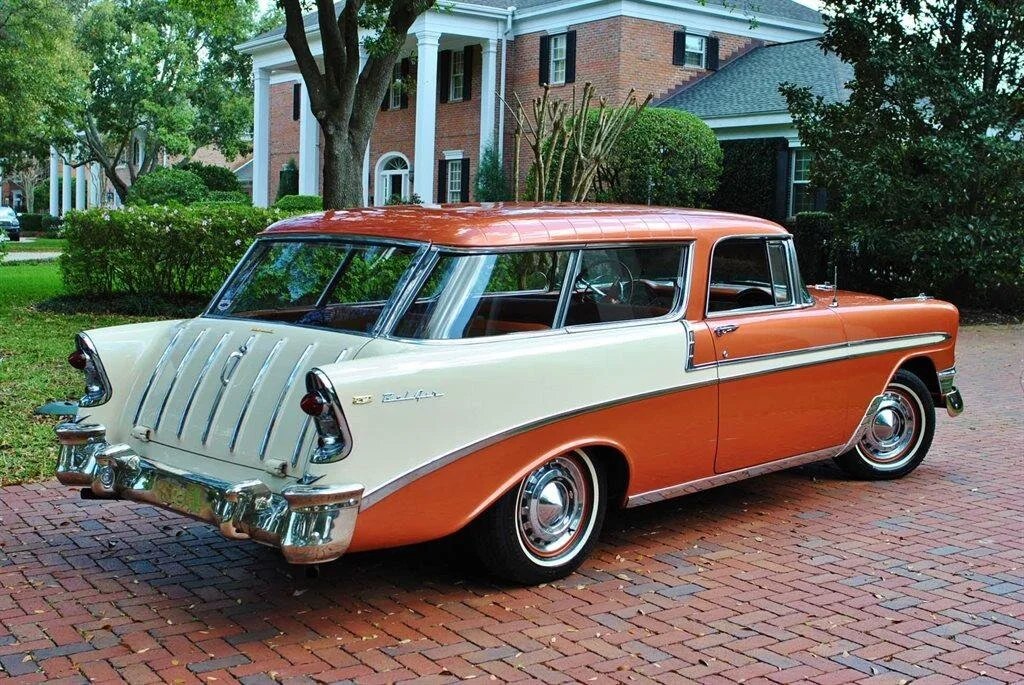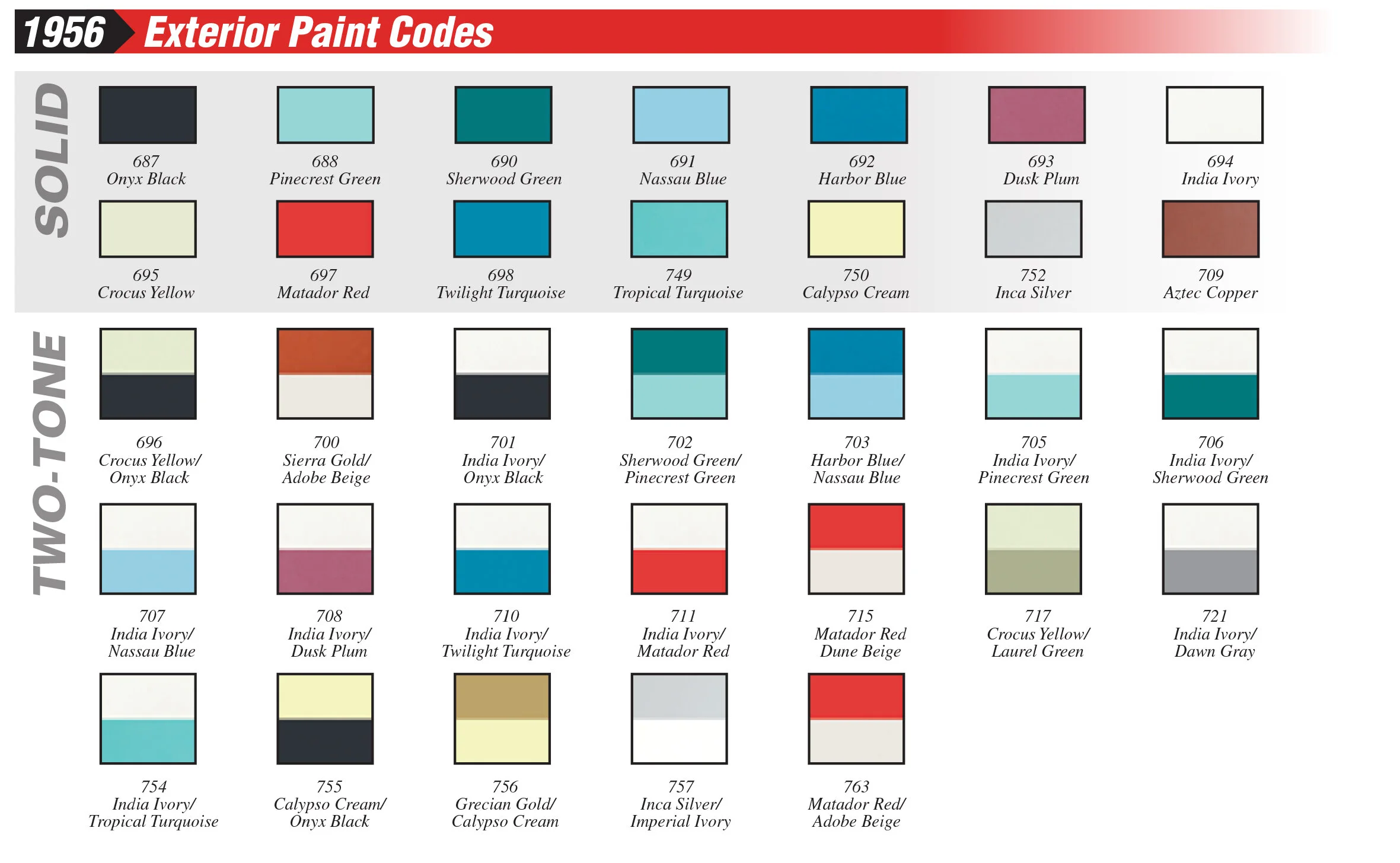History of the Chevrolet Nomad (1955 - 1957)
Tracing the Nomad’s Roots.
The origins of the Chevrolet Nomad can be traced back to a General Motors Motorama concept car that was based on the 1953 Corvette. The concept was introduced at the G.M. Motorama, joining the fastback Corvette Corvair concept on stage as one of Head Stylist Harley Earl's "Dream Cars". The Nomad concept had the front-end of a Corvette, the back of a sleek, yet practical wagon, and the ability to carry six people. Under the hood was an inline-six, producing 150hp, with a two-speed Powerglide. Although it shared a fiberglass body with the Corvette and carried Corvette styling cues, the Nomad was built on a modified 1953 Chevrolet sedan chassis.
G.M. approved the production of the vehicle but on the condition that the design would be transferred to its standard model. Top brass felt that the Nomad would appeal to a wider market segment if it utilized the already popular Bel Air platform and styling.
From the outset, the goal was to distinguish the Nomad from other wagons in the lineup. To accomplish this, G.M. outfitted it with elements unique to the new model. Some of these elements included, sliding quarter windows, seven vertical chrome tailgate bars, a grooved roof, forward sloping B-pillars, and two doors.
1955
Production: 8,386
Engines:
235ci I-6
265ci V8
Exterior and Interior Options:
The Nomad arrived just in time to line up with the most famous Chevrolets that have been built: the Tri-Five models, an icon for cars of the time.
Considered revolutionary, they gained a cult-like following, and today they remain some of the most sought after years for collectors, hot rodders, and custom car builders.
Nestled under the hood of the 1955 Chevrolet Nomad sat the all-new 265 cubic inch V8 engine, which had an overhead-valve, high compression, short-stroke design.
The Nomad was Chevy's most expensive model, aside from the Corvette. With a price of $2571 for the V8, the Nomad's base price was $210 higher than a 4-door Bel Air Beauville wagon and $266 more than the convertible.
1956
Production: 7,886
Engines:
235ci I-6
265ci V8
Exterior and Interior Options:
With Detroit in the midst of the “one year styling” craze, the 1956 Chevrolet Nomad was given a full face-lift. 1956 brought a more conventional full-width grille, pleasing those consumers who did not like the 1955 front end. For ‘56, Nomads also carried the same interior options and rear-wheel sheet metal as other Bel Airs. Also new for 1956 was the option for a padded dashboard, and the gas cap was hidden behind a flip-down tail light on the left side.
1957
Production: 6,100
Engines:
235ci I-6
283ci V8
Exterior and Interior Options:
1957 was another year of changes for the Chevrolet Nomad. Once again the Nomad saw all-around appearance changes, larger engines, the cutting-edge fuel injection option, and a new transmission combined to produce an outstanding vehicle in every characteristic. Chevrolet’s new 283ci V8 boasted, for the first time, the ability to produce one hp per cubic inch. When optioned with the new electronic fuel injection, the performance of the 1957 Chevrolet was impressive. Chevrolet rounded out the advances in technology with their new turbine-driven automatic transmission, the Turboglide.
The Tri-Five Nomads were considered to be a milestone vehicle design. The Nomad was a success, becoming a flagship model in the Chevrolet lineup. Sadly though, G.M. heard customer concerns regarding the practicality and price point of the highly optioned, chrome-laden 2 door luxury wagon, so in the interest of boosting overall sales, Chevrolet discontinued the Nomad (in its iconic form) at the end of the 1957 model year. Though the Nomad namesake lived on as 4 door models until the 1972 model year, the later years could not hold a candle to the golden years for the Nomad.











